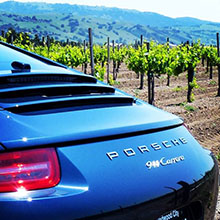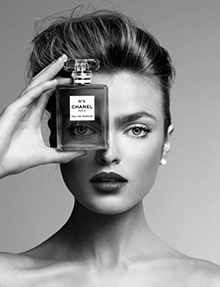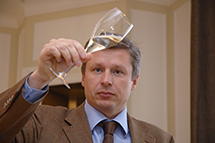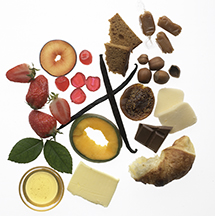Champagne & Sparkling Wine Characteristics
Sparkling wine and champagne characteristics, when tasting, include appearance, aroma/bouquet, and palate. First, it is considered appropriate to hold the glass by the stem as you taste. Holding the glass by the bowl may change the temperature. What are some of the common descriptions? What should one expect when tasting and drinking? How does one describe the characteristics? Here are some general guidelines along with common characteristics and a general range of features you may observe.
- Appearance
- Aroma/Bouquet
- Palate
Appearance
Take a look at the bubbles. The best sparkling wines will have the finest bubbles. They will also form intricate uniform paths from the bottom up through the opening. Lesser quality sparkling wines will have bubbles that vary in size or are larger and take on more random paths to the top. The type of champagne glass will also have an impact on the appearance of bubbles. You can further evaluate the bubbles when you taste the champagne. Next, tilt the glass at about a 45 degree angle. Hold it next to a white background. Sparkling wine (unless there is a definite fault) will have a clarity described as clear or brilliant. Look at the wine. If you were to hold a flashlight below the glass at an angle, would it shine through unobstructed and translucent (clear)? Will the light actually seem more intense and effervescent (brilliant) as it passes through? Next, look at the color. The core or thickest part will appear in a range from very pale straw to moderate gold. blanc de noirs will typically lean more toward the darker end and blanc de blancs will be on the paler end. For rosé, the color will range from very light pink to a smoked salmon color. As you look outward from the core, the rim, (or color at the perimeter) will be lighter, from watery clear to a slightly paler color than the core. The color will give an indication of the age of the sparkling wine. Older vintages will take on a darker hue. Very young sparkling wine will be lighter.
Aroma/Bouquet
This part is often referred to as "nose". When you nose a wine, you sniff it. You do not swirl a sparkling wine like you would a still wine. Swirling will cause the CO2 to dissipate too quickly. The bubbles will help release the aroma (primary scents) and bouquet (underlying smells that develop as wine ages) and carry the scents to your nose. The type of champagne glass will often have an impact on the intensity of the aroma and bouquet. Tilt the glass and put your nose in it. Sniff, inhale and smell. The sparkling wine should smell clean. You can inhale a couple of times, or just take a few short whiffs, whatever feels best to you. Opening your mouth while you sniff may also enhance the experience. You may want to try sniffing at different points in the glass. Associate the aroma/bouquet with scents that are familiar to you. Laboratory testing through gas chromatography has actually proven that wine contains molecules matching those in certain fruits, flowers and other substances. Some common descriptors used for scents found in sparkling wine include apple, pear, fresh baked bread, brioche, citrus, mushrooms, bread dough, a hint of honey, subtle strawberry, some straw or hay, herbal notes, almond… to name some. You may be able to further define the aroma/bouquet. Is the apple smell reminiscent of baked apples or green apples? Is the citrus lemon or lime? The yeasty, bread like scents are the result of autolysis (the consequence of aging on dead yeast cells after the secondary fermentation has taken place in the bottle). An unpleasant off odor may indicate the sparkling wine has a fault.
Palate
The palate is what characterizes sensations in the mouth. It is more than just taste; it also includes feel. Take a small amount of wine into your mouth. One of the first things you notice as you taste it are the bubbles. Observe the sensation as they flow over your tongue and gums. Are they soft and velvety or aggressive and tart? As the bubbles begin to dissolve, what do you notice? Sweetness is detected toward the front of the tongue, acidity is along the sides and bitterness is near the back. Are the elements balanced? Fine champagne may have different attributes. It can be dry, crisp, creamy, delicate, elegant, fruity, display minerality, be full or medium bodied and have differing degrees of autolysis. What you smell may or may not be similar to what you taste, but the descriptors are fairly similar (ripe pear, apple, biscuit, brioche, citrus, mushrooms, strawberry, straw, herbs, almonds, etc.) The finest champagne will become smoother and develop the greatest amount of autolysis as it ages, displaying more fresh bread, brioche, or nutty characteristics. If the wine is out of balance because there is too much alcohol, it can feel heavy or invoke a slight burning sensation. When you swallow or spit (perfectly acceptable, especially if you will taste several wines), a fine champagne should have an enjoyable, lingering finish. The best has wonderful complexity and depth that has been stored and aged appropriately and will lure you back for more. You will likely notice something different every time you smell or taste, like a mystery slowly unfolding before you. |






